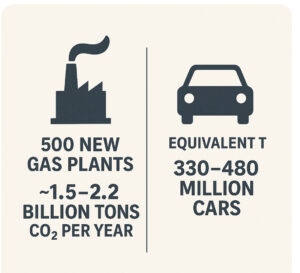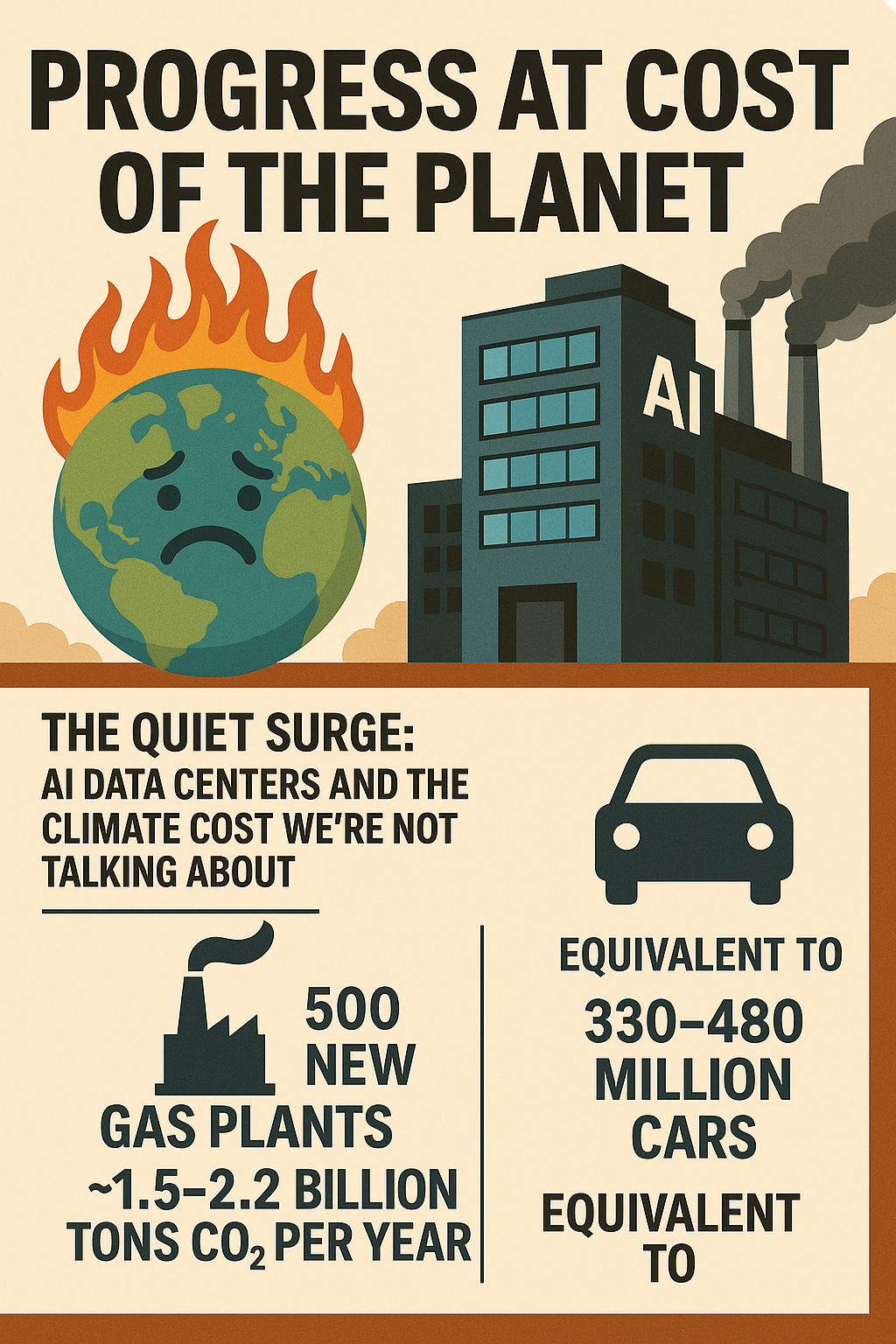When I constructed this post on September 13, 2025, I had to decide between this title : “How Can So Many High IQ High Tech People Be So Shortsighted on the Harm They Are Doing to Others on This Planet” and the selected one.
This is a 7-minute video:
Industry analysts warn that hundreds of new AI data centers will come online in the U.S. between 2024 and 2031. Some projections place the figure as high as 800–1,500. Unlike conventional cloud or video-streaming hubs, these facilities run thousands of high-performance GPUs and TPUs continuously to train and serve large-scale AI models. The electricity draw is immense, often exceeding what local grids can deliver, forcing operators to secure dedicated fossil-fuel generation.
The International Energy Agency projects that global data center electricity demand will more than double between 2022 and 2026, soon rivaling the power use of countries like Sweden or Germany.
Fossil fuel revival
Across several regions, technology companies are partnering with utilities to revive mothballed natural gas plants or build new ones to meet AI demand. At least three U.S. gas plants have already been directly tied to surging AI workloads. Operators defend the plants as necessary stopgaps until renewables scale, but critics warn this approach undercuts net-zero pledges and locks in decades of emissions, given that gas plants typically run for 30–40 years once constructed.
Emissions in numbers
- A 1-GW natural gas plant emits about 3–4.4 million tons of CO₂ per year when operating at full capacity.
- If 500 such plants were added to supply AI’s electricity demand, that would equal 1.5–2.2 billion tons of CO₂ annually.
- That’s the same as putting 330–480 million gasoline cars on the road, each driving 11,000 miles per year.
- If current trends continue, AI’s energy appetite could rival the climate footprint of the entire U.S. transportation sector—within six years. That’s the legacy we’re building.

Water stress and climate inertia
AI’s environmental toll is not just carbon. Data centers also consume huge amounts of freshwater for cooling. The IEA estimates that AI-driven facilities worldwide could require over 1 trillion gallons by 2027, a staggering number that would deepen strain on drought-prone states during heatwaves and dry seasons.
Every new gas plant means decades of additional fossil emissions, making it harder to bend the climate curve and meet Paris Agreement goals.
Federal preemption and deregulation
Policy choices are shaping this build-out. The Trump administration’s “Winning the AI Race” framework calls for a single national standard, preempting state-level environmental oversight of AI infrastructure. States that attempt to restrict or block new AI “mines” over water or emissions concerns risk losing federal grants and infrastructure support.
At the same time, the Environmental Protection Agency, under Administrator Lee Zeldin, has proposed repealing greenhouse gas standards for new and existing power plants and rolling back the 2024 Mercury and Air Toxics Standards (MATS). The agency argues this would save utilities $1.2 billion annually in compliance costs, but environmental groups warn it comes at the expense of public health and climate resilience.
The Secrets
The stakes
The electricity fueling AI isn’t powering hospitals, schools, or homes. It’s feeding ever-larger models, higher corporate profits, and escalating systemic risk.
Unless this build-out pivots quickly toward carbon-free energy—through scaled renewables, grid storage, or advanced nuclear—this decade of digital “progress” may instead be remembered as the decade we locked in climate collapse. What stories will your grandchildren tell about your choices?
This information was sourced from ChatGPT, YouTube, Microsoft Copilot, and Google’s language model.
Clint77090@gmail.com

